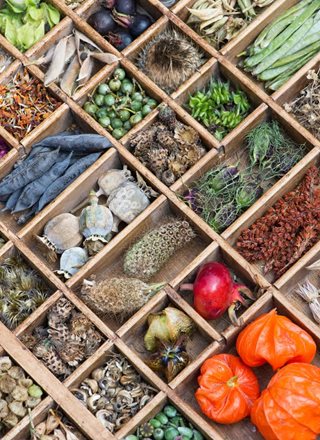Saving Seeds? Plan Ahead!
Looking to try your hand at seed saving? Before planting your garden, take note of these considerations
Photo by: Tim Gainey/Alamy.
If you’re planning to start saving seeds, keep in mind that there are important considerations to make. Tim Johnson from Seed Savers Exchange gives us the scoop on factors to consider before planting your garden.
Pollination habits.
Most crops, whether they are self-pollinators or not, require isolation from other varieties of the same plant type to prevent outcrossing. Non self-pollinators are more likely to suffer from inbreeding depression, which means that you need to plant more of them for viable seed and healthy populations.
Isolation distance.
Make sure there’s enough of a buffer between different varieties of the same species so you don’t end up with an unintentional hybrid.
Population size.
Some species of crops require more plants around them to pollinate with, so make sure you have enough.
Plant type.
Know the difference between annuals and biennials. A lot of garden crops—beets, carrots, rutabaga, parsnip, kale, collards, cabbage—are biennials, and they need to go through a cold-weather season to flower. These are on the more advanced level of seed saving.
Keep track.
Mark plants in your garden to remember which you want to harvest seeds from.
This bonus content accompanies an article in our Autumn 2016 issue in which Tim Johnson shares how to save seeds.

